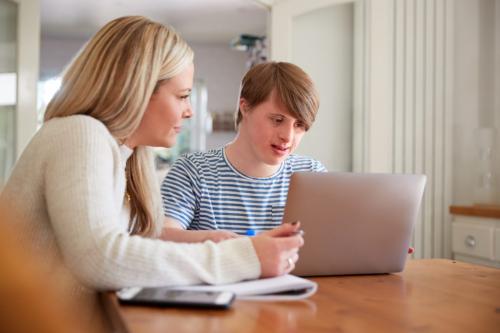What is an IEP, and how does it help Special Education Assistants?

Special Educational Assistants (SEA) are an integral part of the school system. Their education (special education assistant course) and training equip them to support children with all kinds of challenges; they work with students who have been identified as having complex and acute needs, and often become the stabilizing force in the lives of these children, helping them be the best versions of themselves.
Apart from assisting classroom teachers meet the cultural, social and emotional learning goals of all students, SEAs also often help teachers in the development and implementation of Individualized Education Plans or IEPs. In this blog, we will talk in detail about IEPs, their purpose and importance.
What is an IEP or Individual Education Plan?
Education assistants with special education assistant diplomas understand that an IEP provides accountability for customized goals, the means to achieve these goals, any additional services and how they will be delivered, and who is responsible for various parts of the IEP.
An IEP is used for students who need more than just minor adaptations to the curriculum; they are working on outcomes other than the prescribed outcomes of the curriculum, or require more than 25 hours a week of remedial help from someone other than the classroom teacher.
When does a child need an IEP?
Any child who has been diagnosed with a learning or intellectual disability may need an IEP. Sometimes, children with emotional/behavioural concerns would require a Behaviour Support Plan as well.
How to get an IEP
A request has to be made at the child’s school. Sometimes, this request will come from the parent. At others, it will come from the teacher. Once the school receives the request, they will conduct a variety of formal and informal assessments. They will gather information on the students’ academic performance, conduct interviews with parents/guardians, current and past teachers and students themselves. A school psychologist may require formal testing.
If the child is eligible, an IEP team would be put together, which includes the principal, teacher(s), parents, educational assistants and other service providers.
Who creates the IEP?
A teacher, in collaboration with parents, usually develops IEPs. In some cases, other professionals, such as a resource teacher, an occupational therapist, behaviour consultant, etc. would also be involved.
How do SEAs use an IEP?
Special Education Assistants may be responsible for introducing the IEP strategies under the direction of the classroom teacher or case manager. They may be in charge of sharing relevant information about the performance and behaviour of individual learners to support IEP goals, transitions and program design; producing materials and implementing strategies to accommodate unique learner needs/styles; review and reinforce learning activities using lesson plans and learning strategies developed by the teacher/team to help students master concepts and skills; and also document, monitor and report to the teacher/team on implementation of the program. This is only a small portion of what SEAs do to support the student and the teacher.
What should an IEP contain?
When an IEP has been designed appropriately, it helps everyone, including education assistants, to support the child accordingly. With the right education, like a special education assistant diploma, education assistants can play a crucial part in helping the teacher create one. Here’s a brief overview of what an IEP should contain:
•The child's current academic and functional performance levels, including how the disability affects the child’s progress or prevents them from learning the standard curriculum.
•Measurable annual goals, including a plan to measure the child’s progress towards achieving these goals.
•What special education and related services will be provided to the child and what the duration of these services will be, with clear start and end dates, along with details of the frequency they will be delivered.
•Names of all people who will be providing the educational program to the child.
•The IEP should also include any testing accommodations that will have to be made for the child and why; what kind of alternate assessments are recommended and why.
•A transition plan that details the goals and services the student will need to move from the school environment into college, or onto a job, vocational training, anything that aids independent living for the child.
It takes many professionals— including special education assistants— with the right experience and qualifications to care for children with special needs. Therefore, having an IEP is an effective way to assist EAs and others to not only understand the child’s personality, development, learning and preferences. An IEP also enables them to evaluate whether the plan is working and if there has been any progress.
If you’re interested in becoming an SEA, in making a real difference in the world, this is your chance. Check out the program page for more information.
Post Your Ad Here
Comments